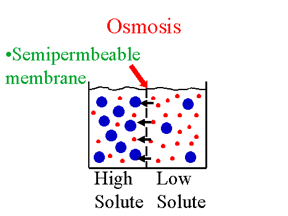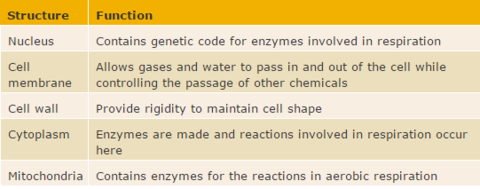Biology Fichas sobre Biology Flashcards, creado por Zara Ahmed el 10/01/2015.
Pineado a
11
0
11
Sin etiquetas

|
Creado por Zara Ahmed
hace casi 10 años
|
|
Cerrar

|
Creado por Zara Ahmed
hace casi 10 años
|
|

Enzymes are proteins that speed up chemical reactions in our cells.
Enzymes work best at their optimum temperature. This is why homeostasis is important - to keep our body temperature at a constant 37°C.
As the temperature increases, so does the rate of chemical reaction. This is because heat energy causes more collisions, with more energy, between the enzyme molecules and other molecules. However, if the temperature gets too high, the enzyme is denatured and stops working.

The important part of an enzyme is called the active site. This is where specific molecules bind to the enzyme and the reaction occurs.
Anything that changes the shape of the active site stops the enzyme from working. This is similar to a key that opens a door lock. It does not matter what a key handle looks like, but if you change the shape of the ‘teeth’ the key no longer works.
The shape of the active site is affected by pH. This is why enzymes will only work at a specific pH, as well as a specific temperature. Change the pH and the enzyme stops working.
Increasing the temperature to 60°C will cause a permanent change to the shape of the active site. This is why enzymes stop working when they are heated. We say they have become denatured.
Active transport is the process by which dissolved molecules move across a cell membrane from a lower to a higher concentration. In active transport, particles move against the concentration gradient - and therefore require an input of energy from the cell.
Sometimes dissolved molecules are at a higher concentration inside the cell than outside, but, because the organism needs these molecules, they still have to be absorbed. Carrier proteins pick up specific molecules and take them through the cell membrane against the concentration gradient.
In humans, active transport takes place during the digestion of food in the small intestine. Carbohydrates are broken down into simple sugars such as glucose. The glucose is absorbed by active transport into the villi, to be passed into the bloodstream and taken around the body.
Photosynthesis is a process used by plants in which energy from sunlight is used to convert carbon dioxide and water into molecules needed for growth. These molecules include sugars, enzymes and chlorophyll.
Photosynthesis is a process used by plants in which energy from sunlight is used to convert carbon dioxide and water into molecules needed for growth. These molecules include sugars, enzymes and chlorophyll.
Light energy is absorbed by the green chemical chlorophyll. This energy allows the production of glucose by the reaction between carbon dioxide and water. Oxygen is also produced as a waste product.
Photosynthesis:
Carbon dioxide + water ==> (light energy) glucose + oxygen
6CO2 + 6H2O==> (light energy) C6H12O6 + 6O2
Diffusion occurs when particles spread. They move from a region where they are in high concentration to a region where they are in low concentration. Diffusion happens when the particles are free to move.
The movement of oxygen and carbon dioxide in and out of leaves during photosynthesis occurs by diffusion.
The higher concentration of carbon dioxide in the air diffuses into the leaf for photosynthesis.
Water can move across cell membranes because of osmosis. For osmosis to happen you need:
1) Two solutions with different concentrations. 2) A partially permeable membrane to separate them.
Osmosis is the movement of water from a less concentrated solution to a more concentrated solution through a partially permeable membrane.

Three factors can limit the speed of photosynthesis: light intensity, carbon dioxide concentration and temperature.
Respiration releases energy for use in life processes. There are two types of respiration, aerobic (uses oxygen) and anaerobic (does not use oxygen). Respiration can produce useful products that have uses in a range of industries.
This is the equation for aerobic respiration:
glucose + oxygen → carbon dioxide + water (+ energy)
Aerobic Respiration Chemical Equation:
C6H12O6 + 6O2 → 6CO2 + 6H2O
Anaerobic Respiration (Humans):
glucose → lactic acid (+ energy released)
Anaerobic Respiration (Plants):
glucose → ethanol + carbon dioxide
(+ energy released)

Biogas is a fuel manufactured using animal manure (or sometimes human waste). Biodigesters are used to convert the manure into biogas. Bacteria inside the biodigester break down parts of the manure and produce methane gas.

 Ocultar las fichas que te sabes
Ocultar las fichas que te sabes